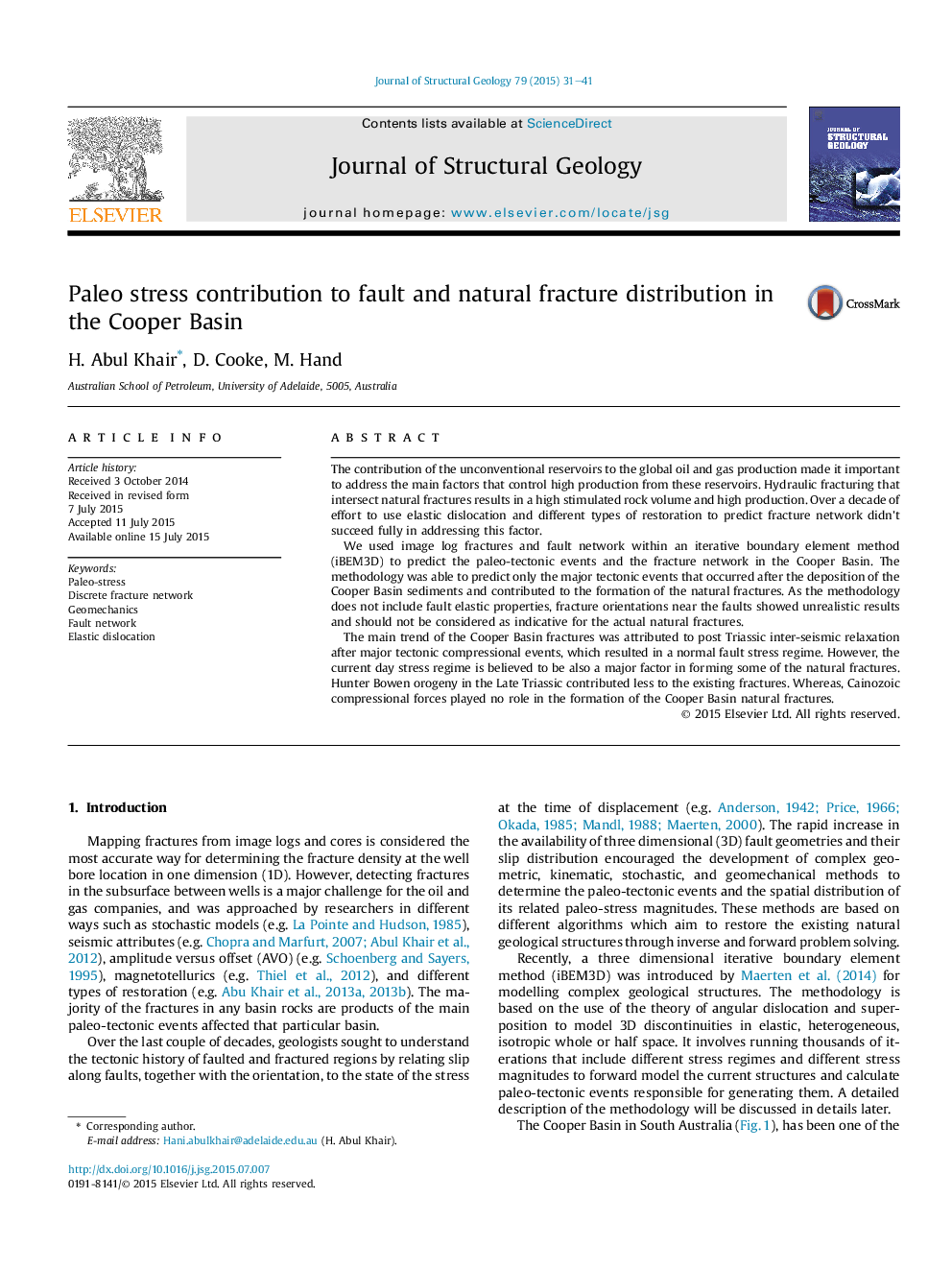| کد مقاله | کد نشریه | سال انتشار | مقاله انگلیسی | نسخه تمام متن |
|---|---|---|---|---|
| 4732985 | 1640501 | 2015 | 11 صفحه PDF | دانلود رایگان |
• We used image logs and faults from 3D seismic to build a structural model.
• We analysed the structures and extracted the paleo tectonic events.
• We used the faults and the fractures as input in iterative modelling to predict the paleo stress regimes.
• We used the predicted paleo stress regimes to model possible natural fractures.
The contribution of the unconventional reservoirs to the global oil and gas production made it important to address the main factors that control high production from these reservoirs. Hydraulic fracturing that intersect natural fractures results in a high stimulated rock volume and high production. Over a decade of effort to use elastic dislocation and different types of restoration to predict fracture network didn't succeed fully in addressing this factor.We used image log fractures and fault network within an iterative boundary element method (iBEM3D) to predict the paleo-tectonic events and the fracture network in the Cooper Basin. The methodology was able to predict only the major tectonic events that occurred after the deposition of the Cooper Basin sediments and contributed to the formation of the natural fractures. As the methodology does not include fault elastic properties, fracture orientations near the faults showed unrealistic results and should not be considered as indicative for the actual natural fractures.The main trend of the Cooper Basin fractures was attributed to post Triassic inter-seismic relaxation after major tectonic compressional events, which resulted in a normal fault stress regime. However, the current day stress regime is believed to be also a major factor in forming some of the natural fractures. Hunter Bowen orogeny in the Late Triassic contributed less to the existing fractures. Whereas, Cainozoic compressional forces played no role in the formation of the Cooper Basin natural fractures.
Journal: Journal of Structural Geology - Volume 79, October 2015, Pages 31–41
